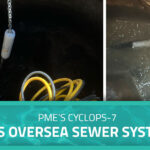
PME’s Cyclops-7 Sees Oversea Sewer Systems
April 24, 2024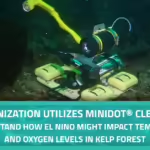
Watching Earth and Nature Unlimited (WENU) Organization Utilizes miniDOT® Clear Loggers To Understand How El Nino Might Impact Temperature and Oxygen Levels In Kelp Forest
October 15, 2024PME miniDOT® Logger Facilitates Major Findings in Small System
Project Details
- PRODUCT(S): miniDOT® Logger
- APPLICATION: Freshwater Ponds
- PARAMETER: Dissolved Oxygen
- LOCATION: Yale-Myers Forest, CT
- ORGANIZATION: Yale University
- RECOGNITION: Meredith Holgerson, Ph.D.
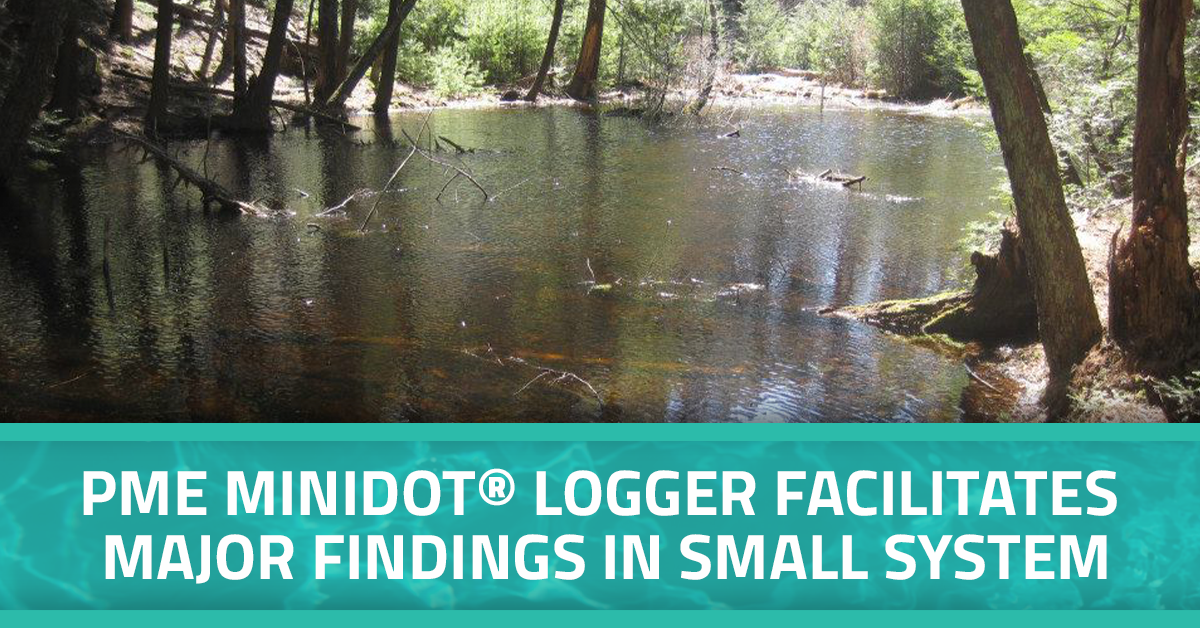
Despite their diminutive size, small water bodies like ponds make up the majority of our world’s still water systems. It is estimated that 95% of Earth’s still water systems measure less than 10 hectares; and of that percentage, most rarely even exceed a single hectare (2.5 acres). Such distinctions may seem trivial, but where water bodies are concerned, dimensions can be everything. Size is an important predictor of how aquatic ecosystems function; yet ponds remain understudied relative to larger lakes. Considering the global abundance of ponds, their underrepresentation in scientific studies could create significant gaps in scientific understanding. Researchers like Dr. Meredith Holgerson are working to bridge these gaps by focusing their studies on these often-overlooked systems.
Aeration & Reaeration in Temporary Ponds
Oxygen acts as a key regulator of aquatic systems by influencing habitat and biogeochemical processes. Waterbodies with very little oxygen become hypoxic; a state that is largely driven by the decomposition of organic matter. In small and shallow systems like ponds, terrestrial inputs can be high relative to water volume, sometimes causing hypoxic conditions to persist for months.
In hypoxic systems, aeration from the atmosphere at the air-water surface can be critical. Greater gas exchange occurs when more turbulence creates ripples on the water’s surface. However, small waterbodies sheltered by vegetation have less turbulence than larger lakes, which could further reduce oxygen availability. Both the global abundance of ponds and the potential for persistent hypoxia led Holgerson to monitor oxygen dynamics in three temporary ponds in Connecticut in 2013 and 2014.
Methods & Observations
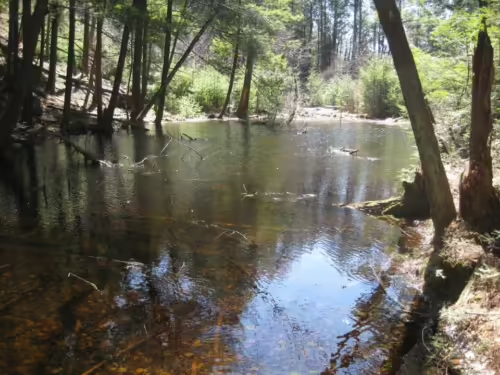 Holgerson had initially measured dissolved oxygen (DO) in a series of ponds at dusk (when DO should be highest following daytime photosynthesis) and at dawn (when DO should be lowest) in a series of forested ponds. In contrast to her expectations, Holgerson found that ponds often had higher DO at dawn relative to dusk in the summer. To follow up on these surprising results, Holgerson borrowed an oxygen logger and found that the ponds often showed an overnight increase in DO, which she thought could be due to reaeration from the atmosphere. Holgerson noted that the spikes in DO often occurred after the ponds had been cooling and speculated that DO may be increasing when the ponds water column turned over (or mixed). The other possibility was that benthic (or bottom-water) DO may have been high, and water column mixing could bring up this water. To test between these hypotheses, Holgerson deployed a PME miniDOT® Logger 10 cm above the sediment, recording DO and temperature levels every 5 minutes from June 26th to July 21st 2014.
Holgerson had initially measured dissolved oxygen (DO) in a series of ponds at dusk (when DO should be highest following daytime photosynthesis) and at dawn (when DO should be lowest) in a series of forested ponds. In contrast to her expectations, Holgerson found that ponds often had higher DO at dawn relative to dusk in the summer. To follow up on these surprising results, Holgerson borrowed an oxygen logger and found that the ponds often showed an overnight increase in DO, which she thought could be due to reaeration from the atmosphere. Holgerson noted that the spikes in DO often occurred after the ponds had been cooling and speculated that DO may be increasing when the ponds water column turned over (or mixed). The other possibility was that benthic (or bottom-water) DO may have been high, and water column mixing could bring up this water. To test between these hypotheses, Holgerson deployed a PME miniDOT® Logger 10 cm above the sediment, recording DO and temperature levels every 5 minutes from June 26th to July 21st 2014.
With data from the miniDOT® and findings from a previous study on the same pond, Holgerson found that bottom waters had consistently low DO and exhibited some of the same nighttime spikes in oxygen, thereby eliminating the hypothesis that benthic waters explained the nighttime increase in DO in the surface waters. This left convection-driven turbulence as the most likely cause of the nocturnal reaeration events. Convective cooling mixes the surface and bottom waters, creating turbulence at the surface that allowed for reaeration events to rapidly occur. Holgerson’s observations were the first of their kind in these systems and highlight the importance of investigating otherwise accepted paradigms across a wide range of settings.
Product Description
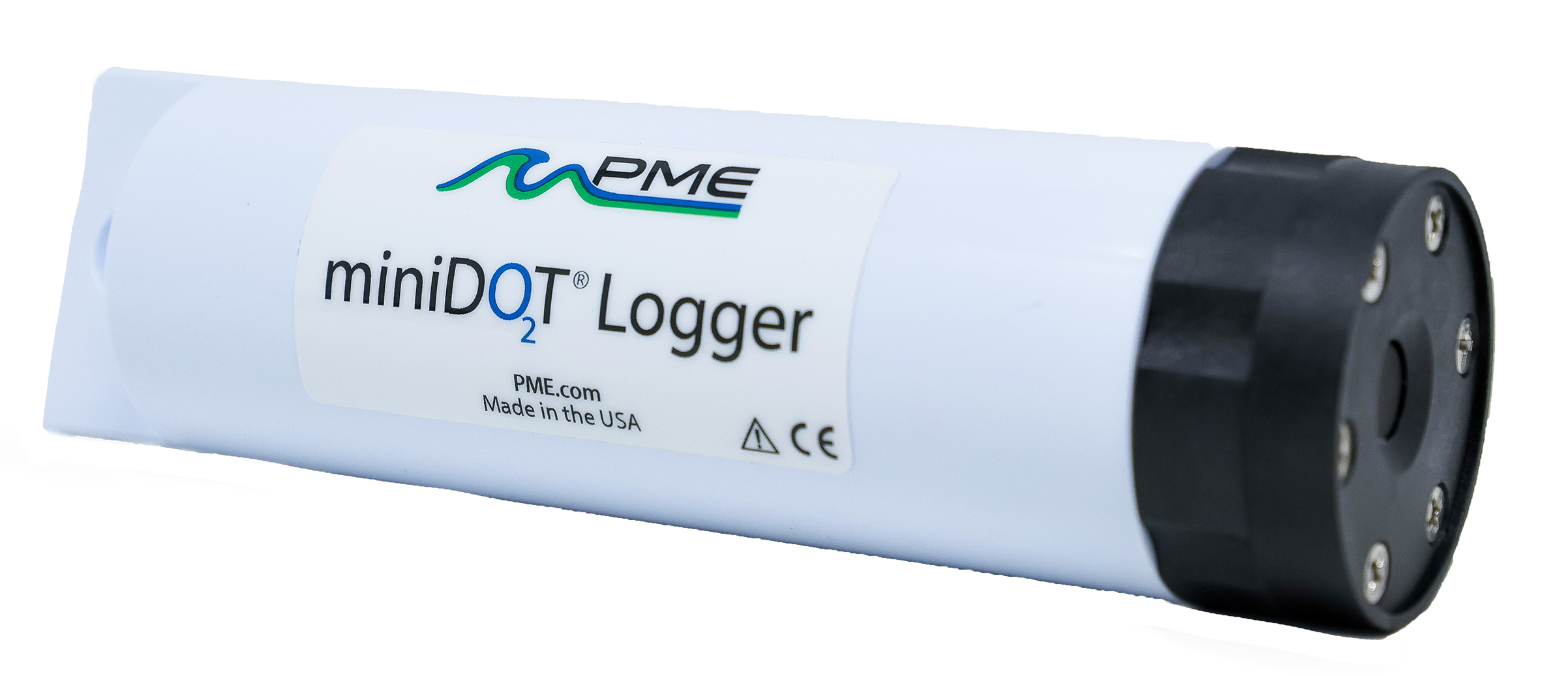
The PME miniDOT® Logger is a completely submersible instrument that logs dissolved oxygen and temperature measurements. Data is recorded on the internal SD card and operational functions, like setting time and sample intervals, can be accomplished via USB cable. The oxygen sensor is an optode that measures dissolved oxygen concentration in water through a fluorescence method. The miniDOT® can withstand temperatures ranging from 0 – 35°C with a depth rating of 300 meters.

